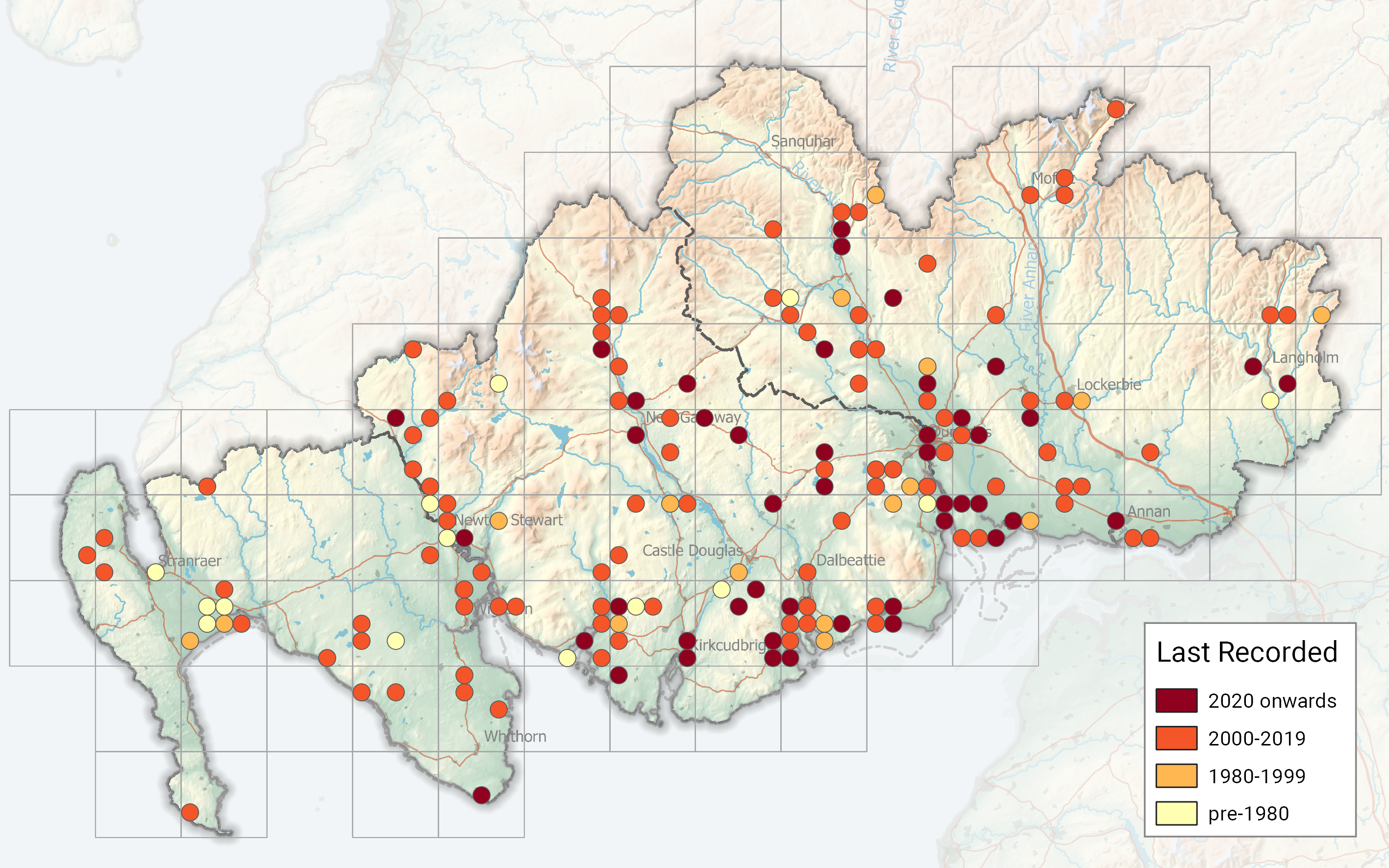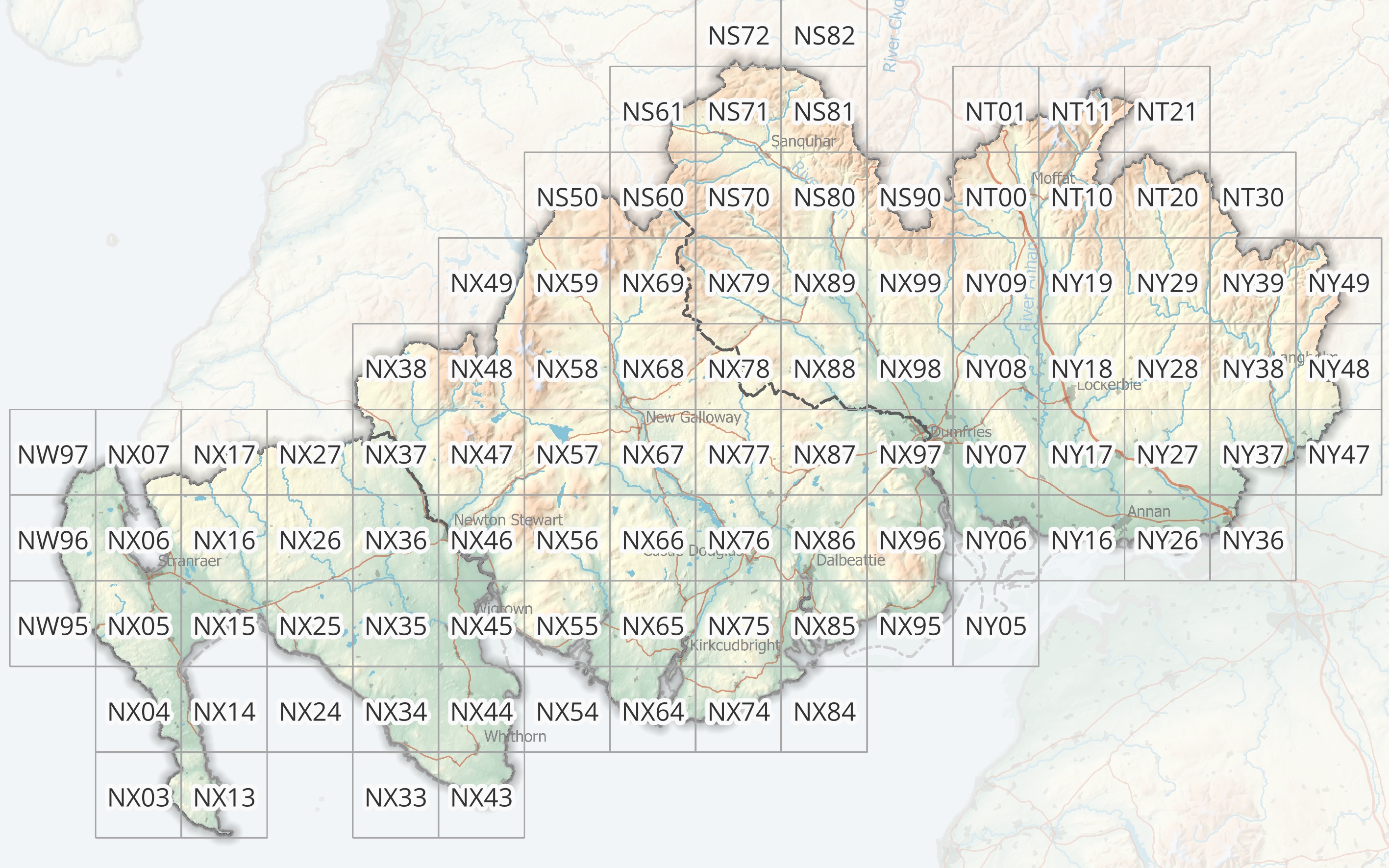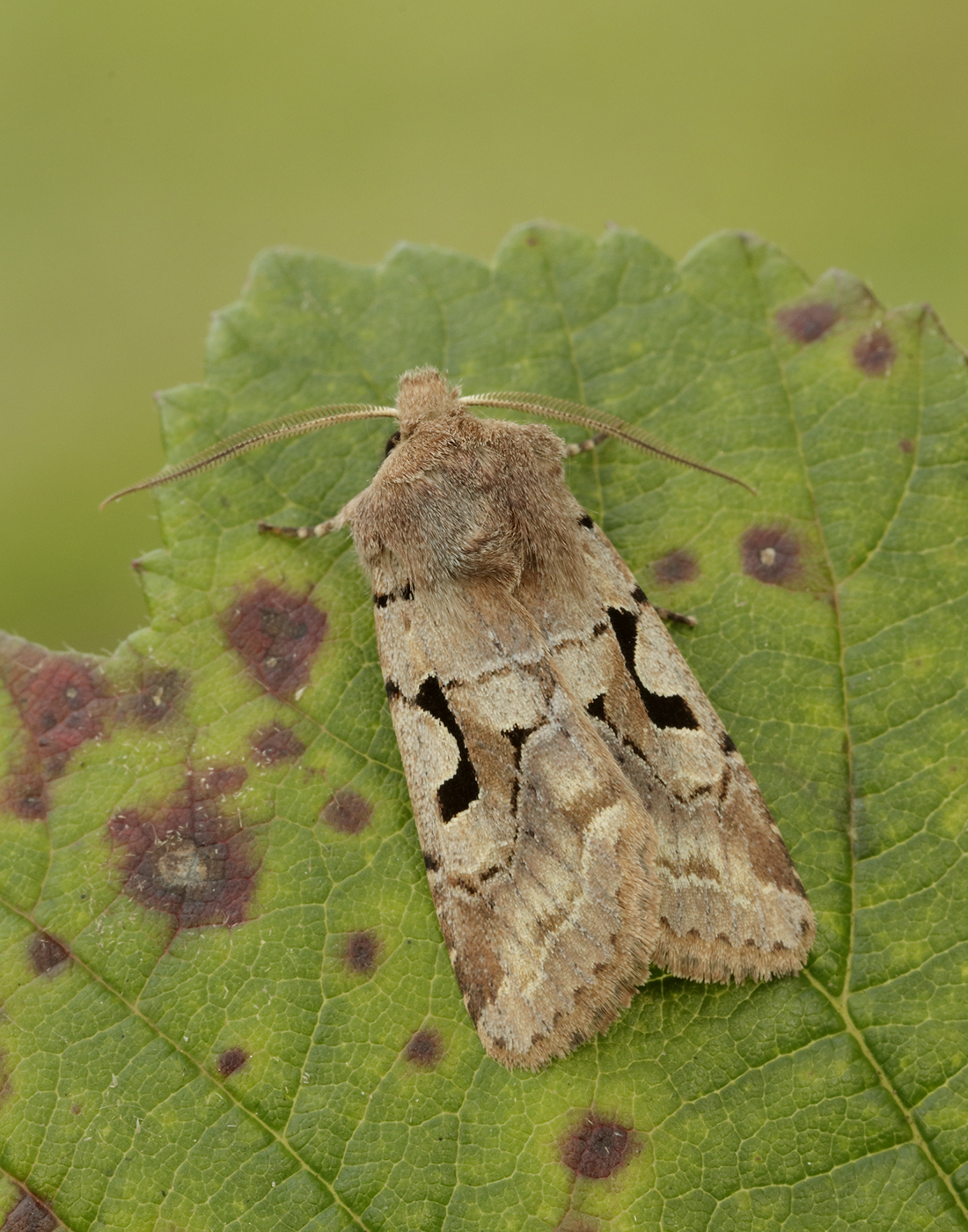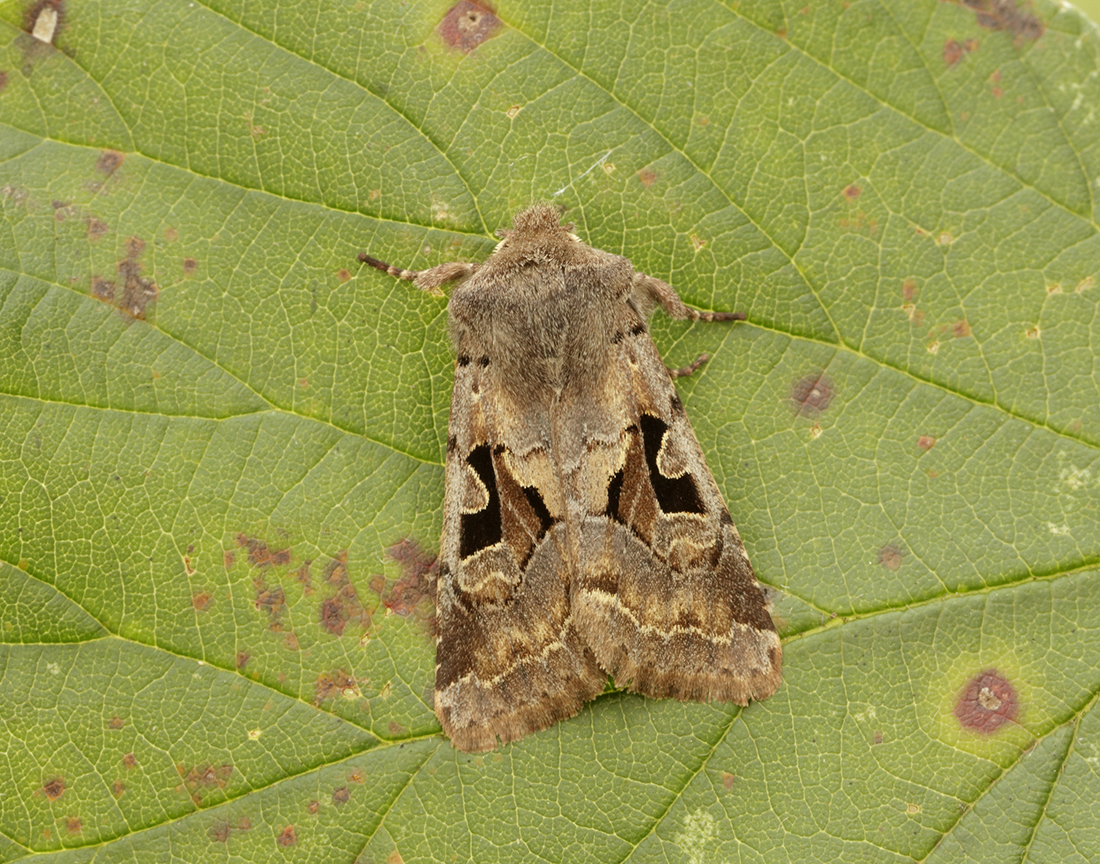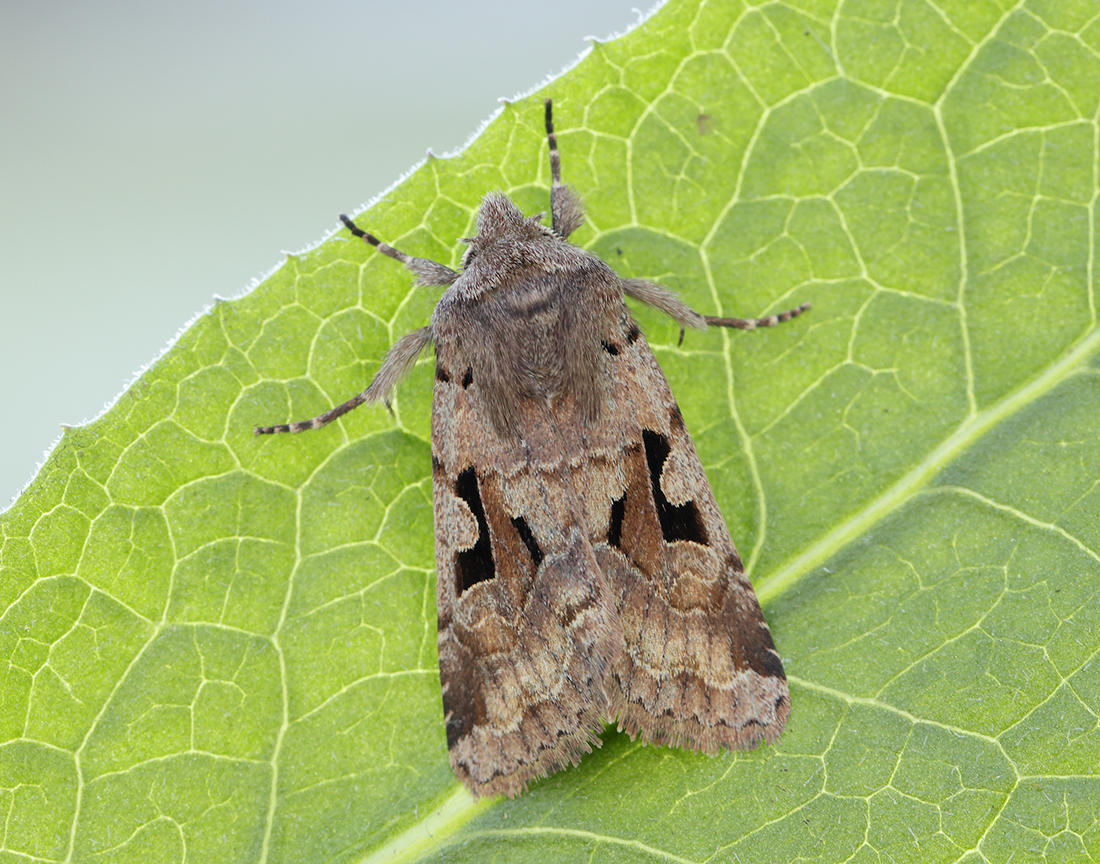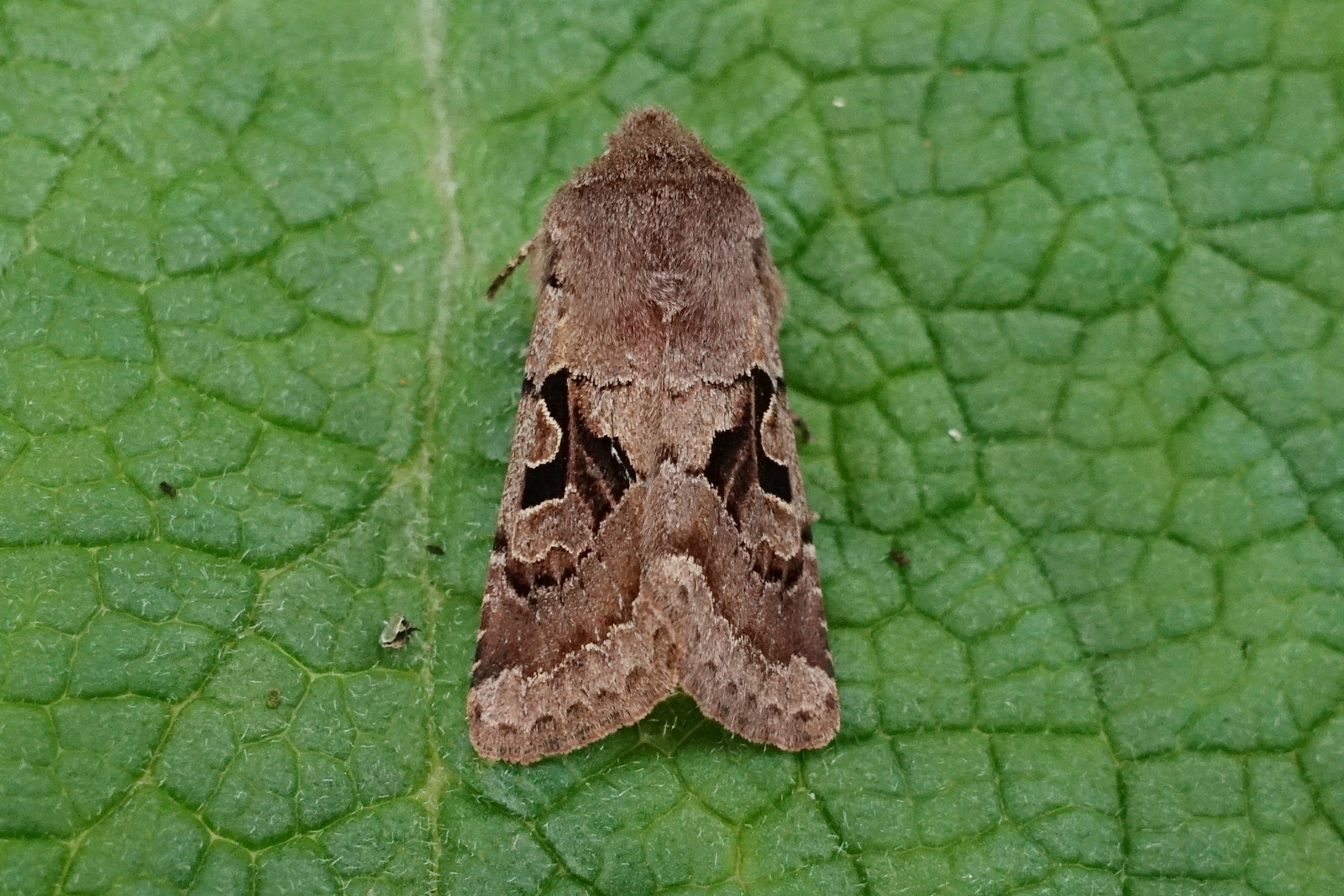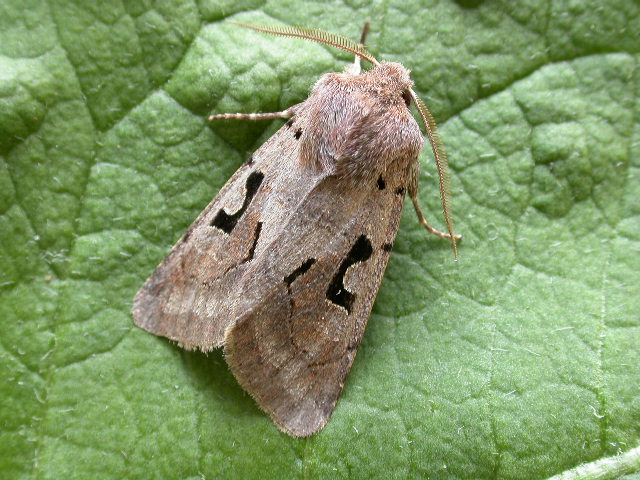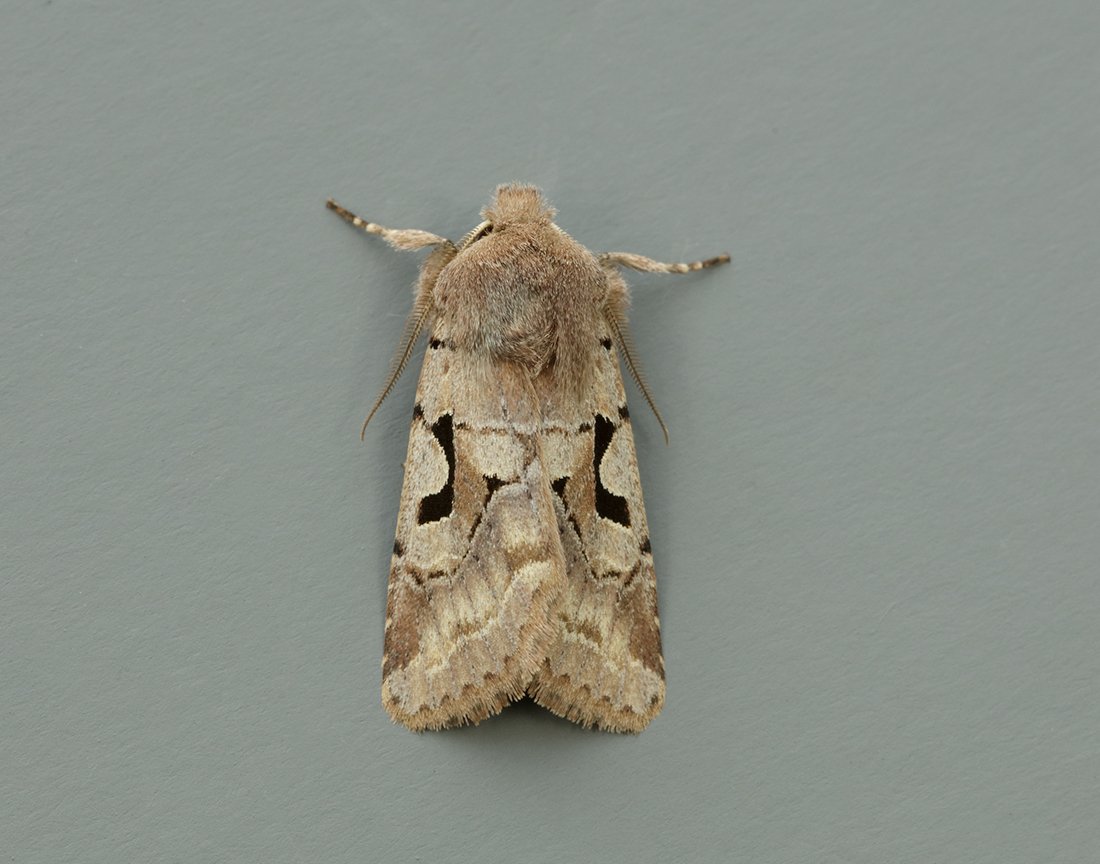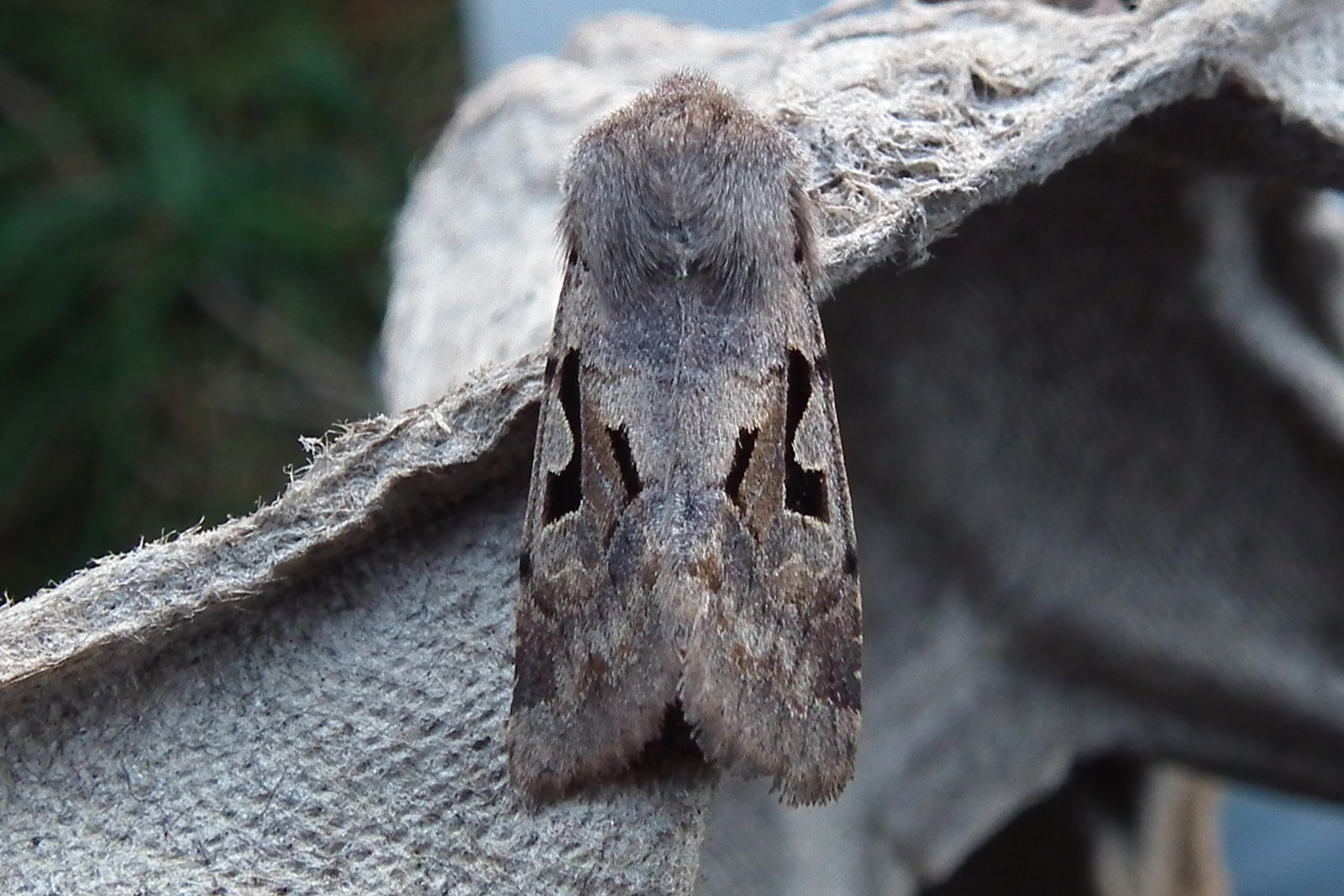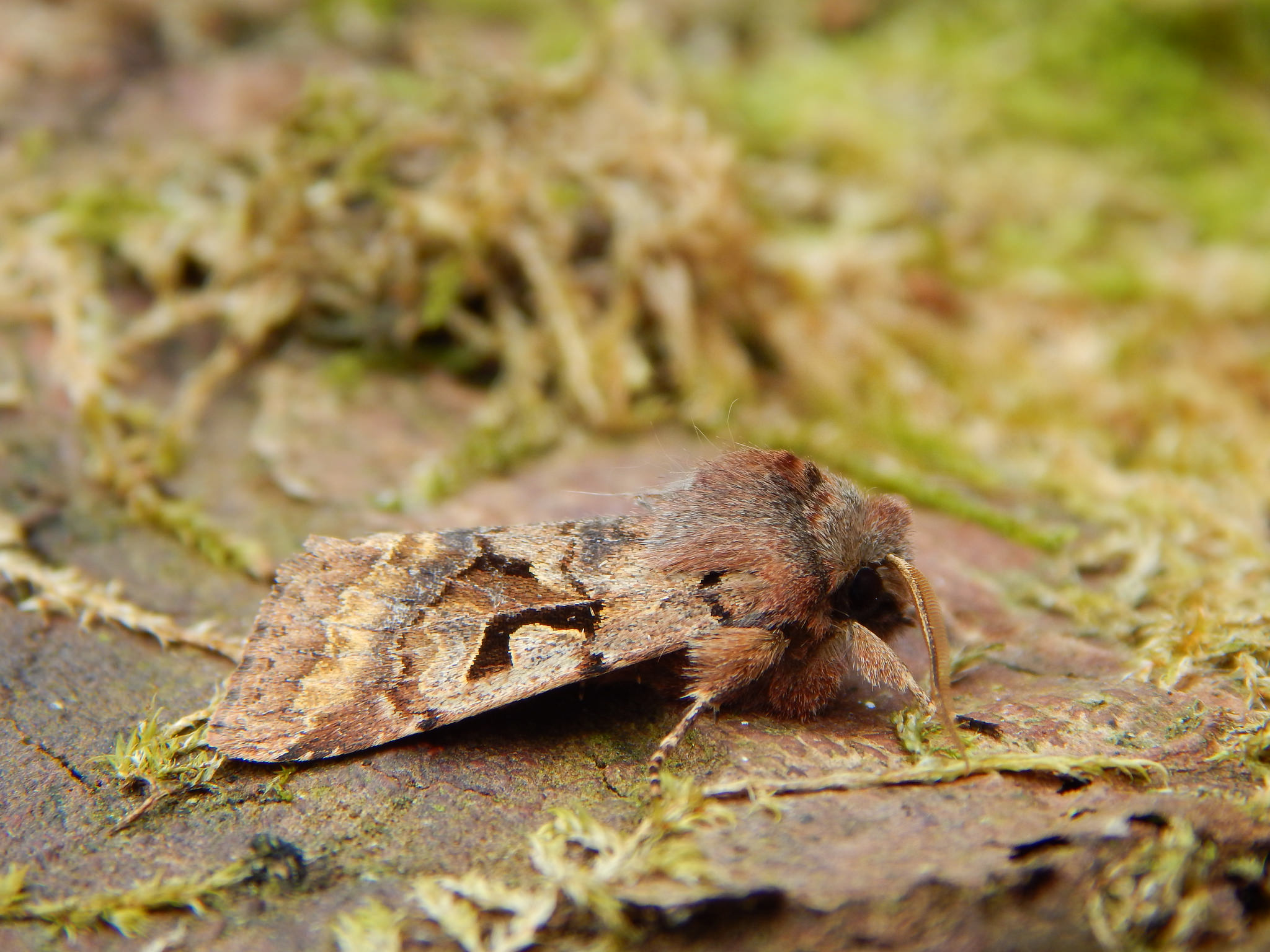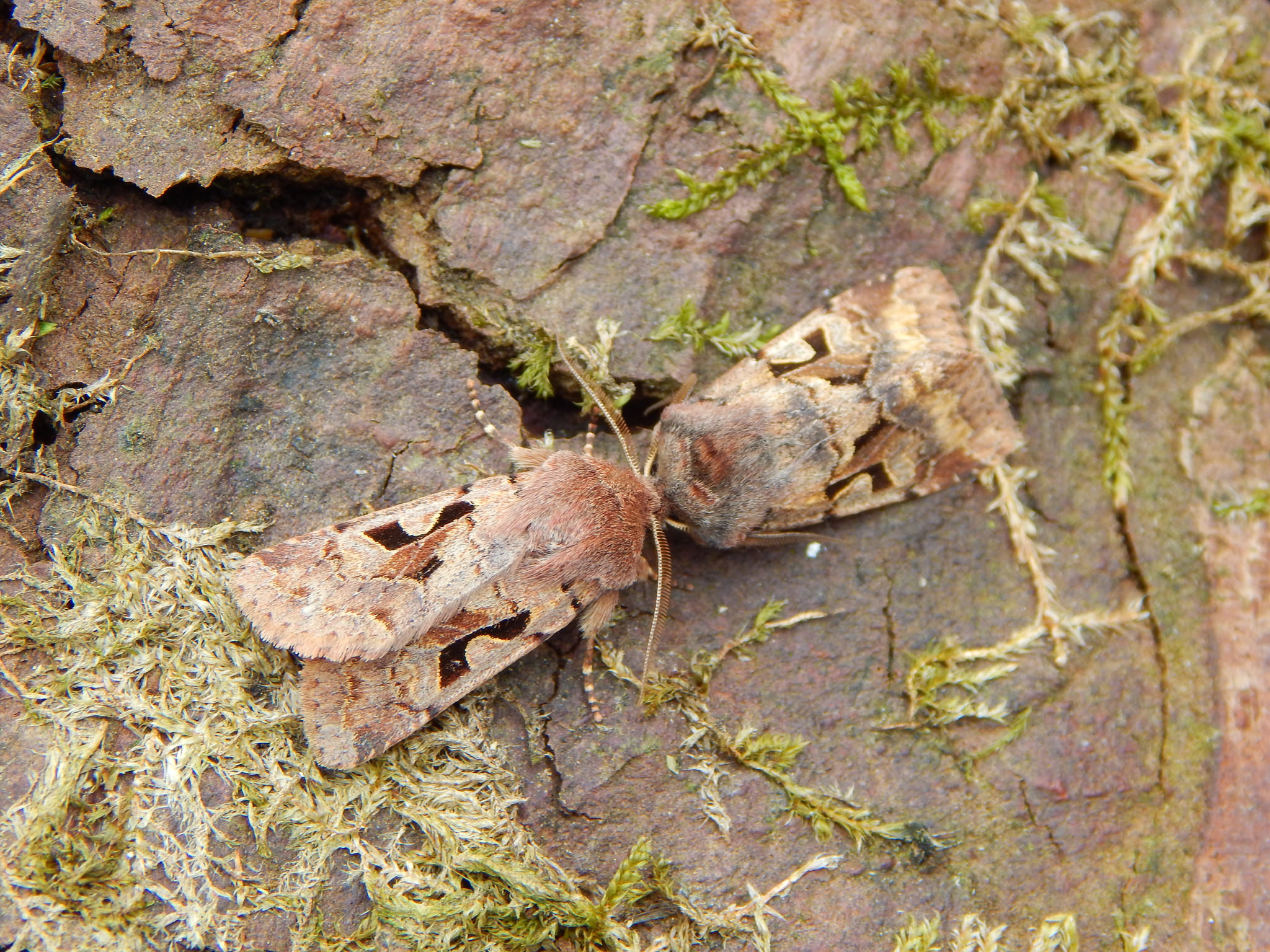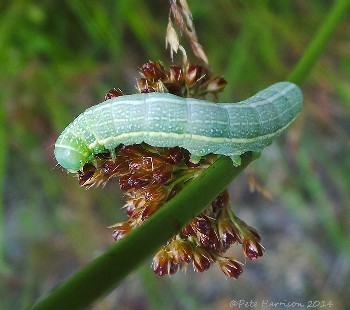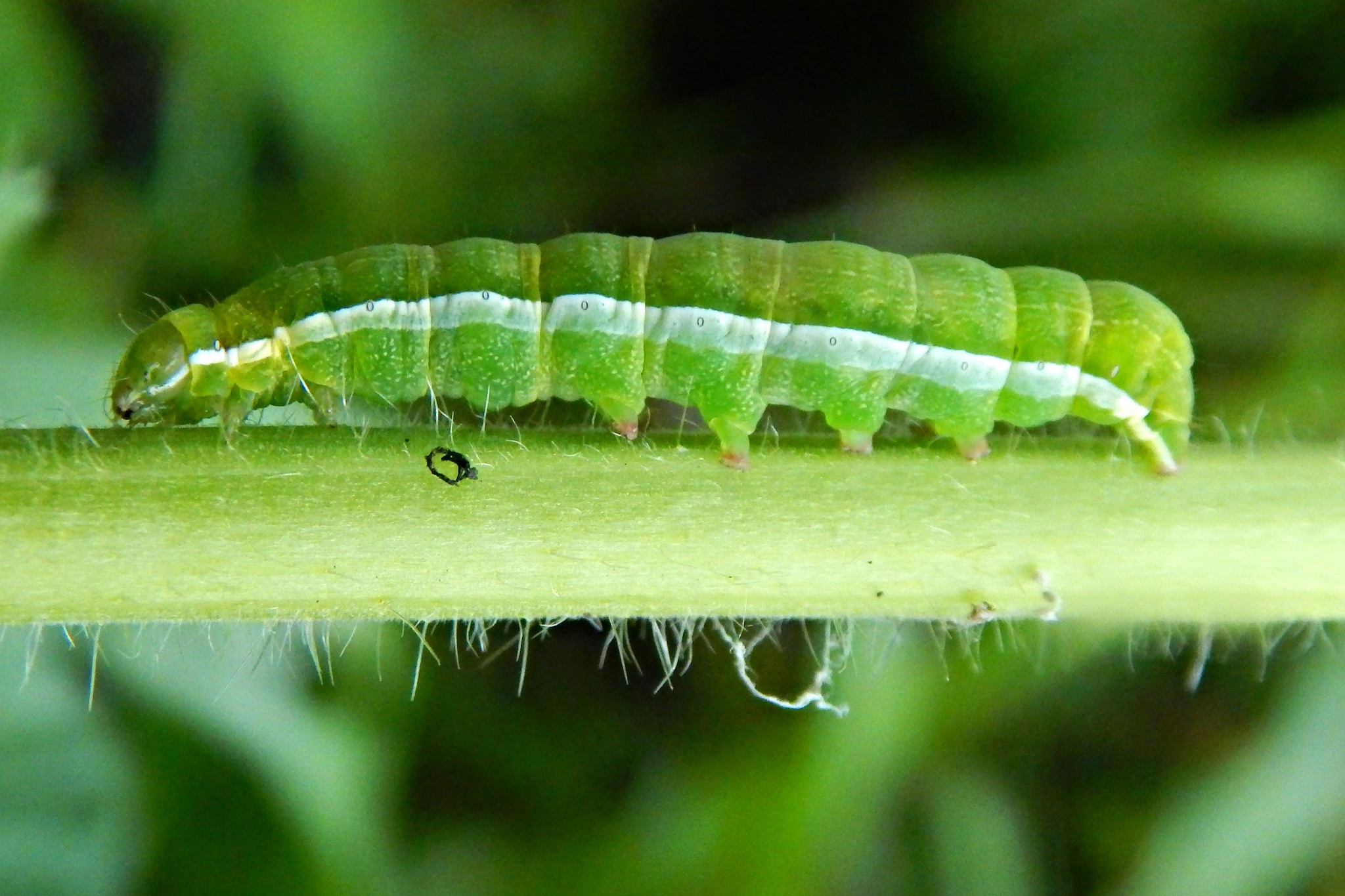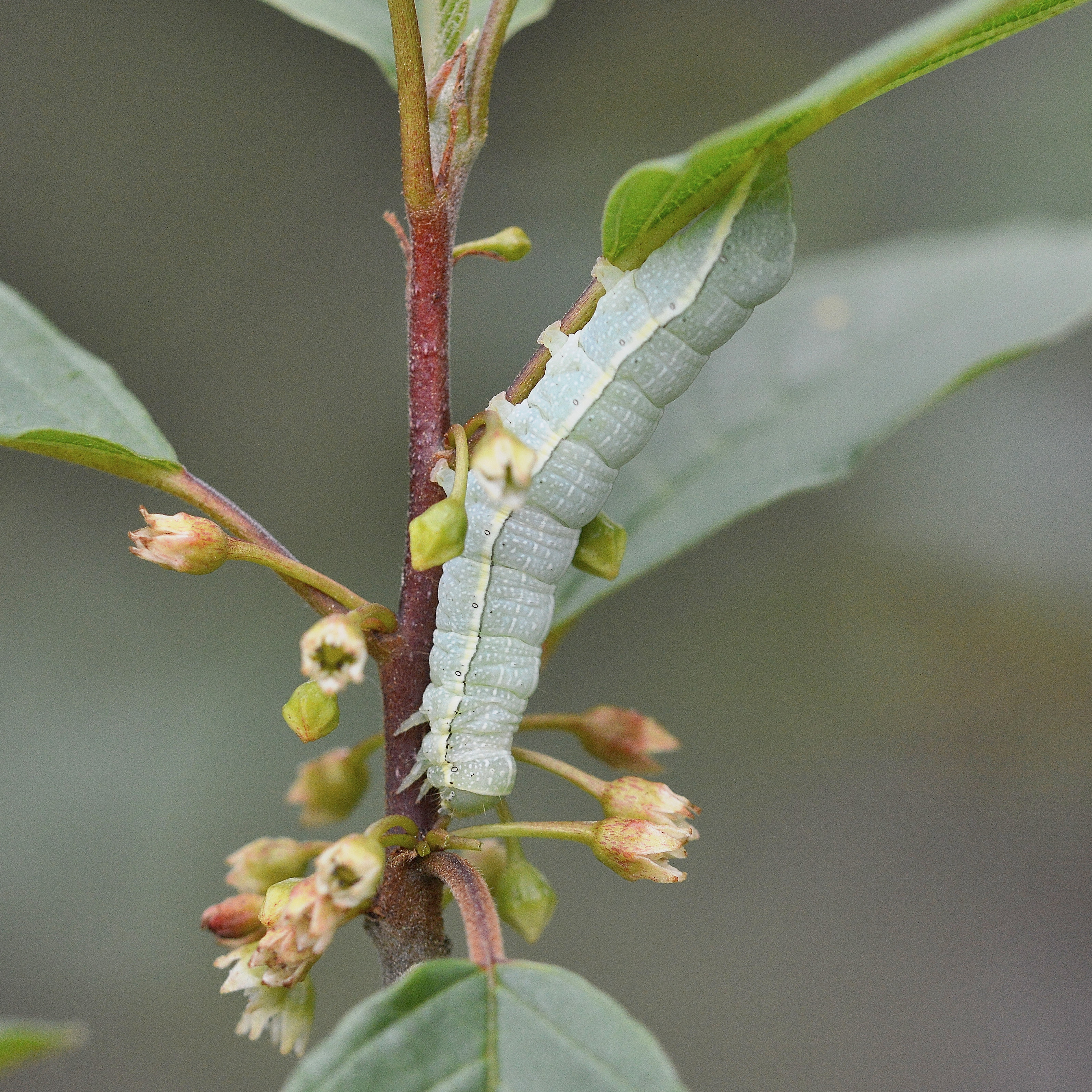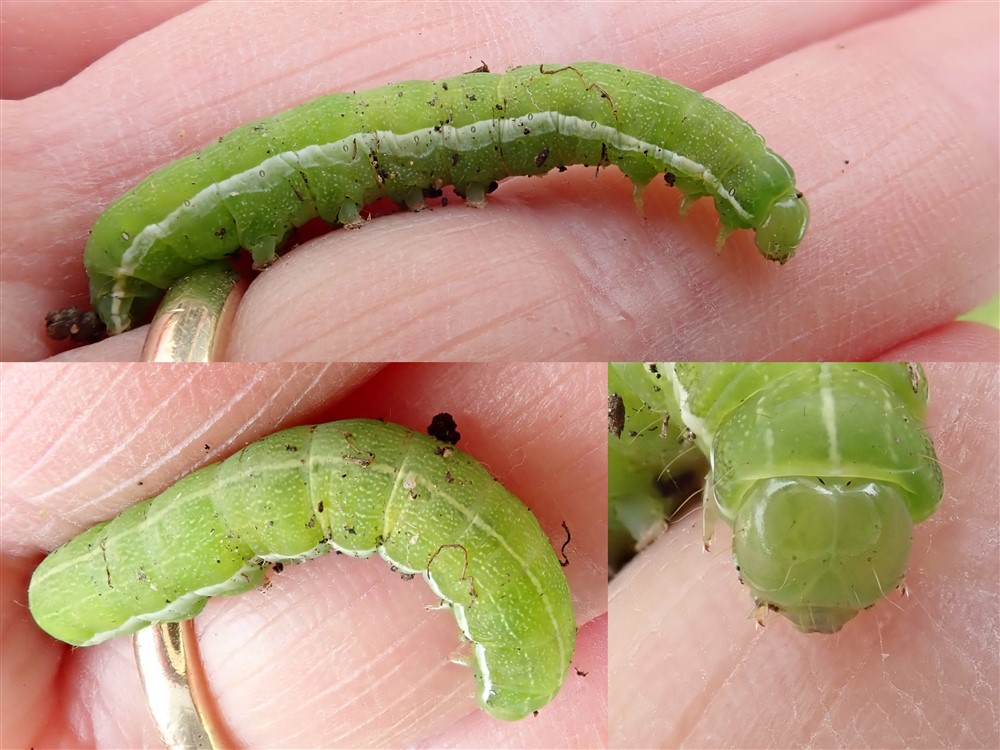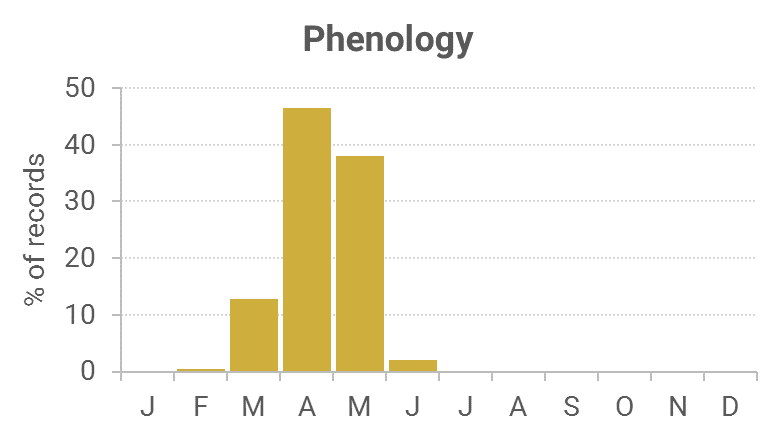See also Moth of the Week (06/05/2019)
Identification
The black saddle-like mark in the centre of the forewing which gives the moth its name is unique.
Recording Method.
Attracted to light, also comes to sugar and flowers.
Life cycle
One generation. Overwinters as a pupa underground in a cocoon, with the imago fully grown. Larvae are present April to July, feeding mainly at night.
Larval foodplants
Oaks, birches, hawthorns, sallows and Common nettle to name a few.
Habitat
Anywhere.
History
Lennon (1863) had found it to be common everywhere around the Dumfries area. Gordon (1913) stated it to be generally distributed and abundant at sallow blossom, being very variable. It also came to sugar in the woods at Corsemalzie on 9th June 1898 and 1st July 1899. Earliest date was 25th March 1897.
Sir Arthur Duncan (1909-84) during his lifetime had found it at Closeburn, Tynron and Castlehill, Dumfries (all VC72). Archibald Russell (1944) listed it as occurring near Gatehouse of Fleet (VC73) during the years 1942-43.
During the 1960s it was found at Glentrool, Palnackie, Rockcliffe, Bargrennan and Wood of Cree, mainly by Pelham-Clinton.
The seven Rothamsted stations during 1974-93 accumulated 750 records of this common spring noctuid. The trend continued through from 1992 to 2010 with about the same number of records recorded, but only twenty of them from Wigtownshire. They were from widely scattered sites across those other two vice-counties.
The form ab. gothicina Herrich-Schäffer was recorded when two were trapped at Kirkland (VC72) on 21st April 2011. In this reddish-brown form the black gothica-mark is either pale or missing.

